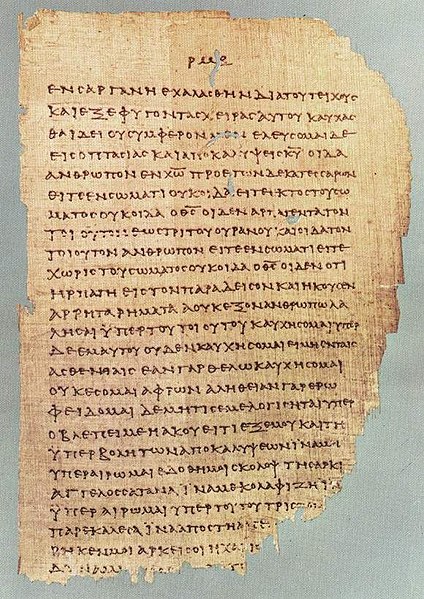Aramaic in the New Testament (Post #5)
Matthew 5:28 records Jesus’ famous saying about the sinfulness of lust. Often it sounds like you can seriously sin by accident. Usually, the translation sounds something like this:
“You have heard that it was said, ‘You shall not commit adultery.’ But I say to you, everyone who looks at a woman with lust has already committed adultery with her in his heart.” (Matt 5:27-28 NAB)
Greek Background
However, a closer inspection of the Greek and the various translations reveals a difficulty. The Greek does not say “look at a woman with lust.” Rather, it says “…look at a woman in order to lust [after her]” or “…look at a woman for the purpose of lust.” In Greek grammar, this is what we call a purpose clause, indicated by the short words, pros to, plus an infinitive in the Greek. A good example is in Ephesians 6:11 – “Put on the full armor of God in order that you may be able to stand against the scheming of the devil” (my trans.).
Aramaic Background
Recent grammarians have, however, relied on a hypothetical Aramaic background to this Greek saying. Rather than translating the phrase as a purpose clause, they have looked to a possible Aramaic construction, where the pros to represents an Aramaic lamed, a letter that functions as a particle indicating one of any number of things: a genitive relationship, direct object, indirect object, ethical dative, purpose, direction (See Alger Johns, A Short Grammar of Biblical Aramaic, p. 11). Fr. Maximilian Zerwick explains the supposed Aramaic background of pros to in his Biblical Greek:
“Indeed the sense need not even be consecutive; in the passage in question [Matt 5:28] one would expect the sense ‘with concupiscence’ simply, and this may in fact be the sense intended, if the προσ το [pros to] can be understood as a servile rendering of a Semitic (Hebrew or Aramaic) le + infinitive which, though of it means ‘to(wards)…’ and so has final or consecutive sense, may also be used without any such connotation and simply with the sense ‘…-ing.’ (p. 135, sec. 391)
Notably, Fr. Zerwick relies a lot on what “one would expect.” The difference between the two translation options might seem inconsequential, but I think there’s an significant theological principle at stake.
Theology of Intention
What’s important here from a moral theology perspective is intention. When this passage is translated based on a hypothetical Aramaic reconstruction, rather than on the actual Greek text, it sounds as if one can seriously sin by accident. The typical translation weakens the intentionality of the act being indicated by the Greek grammar, making lust sound like an almost unintentional part of “looking” since “with lust” (or in RSV “lustfully”) merely functions as an adverb modifying the verb “to look.” But if it is translated as a purpose clause, which follows the Greek grammar most closely, then the teaching indicates that a moral intention must be involved—a decision to look for the purpose of lust or in order to lust.
A Better Translation?
And, if you really want to consider the Aramaic background, the le particle also works to indicate purpose, as I listed out above. So you can have your Aramaic cake and eat it too. The ESV translation, in my opinion, strikes the balance right, with this translation:
But I say to you that everyone who looks at a woman with lustful intent has already committed adultery with her in his heart. (Mat 5:28 ESV)
You can’t sin by accident. Lust involves an intentional choice to commit evil, to violate God’s commandments.




 You might be surprised when you’re reading the New Testament and a verse disappears into thin air. For example, if you are reading Acts 8:36, you would expect Acts 8:37 to follow, but oddly, 8:38 is the next verse. What happened to Acts 8:37?
You might be surprised when you’re reading the New Testament and a verse disappears into thin air. For example, if you are reading Acts 8:36, you would expect Acts 8:37 to follow, but oddly, 8:38 is the next verse. What happened to Acts 8:37?